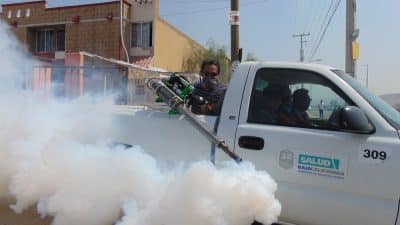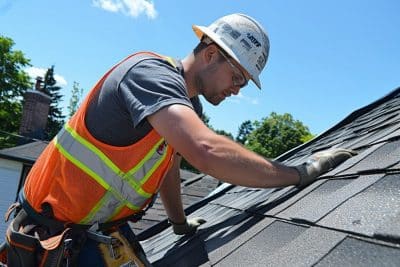
Outdoor heaters have advanced significantly from simple propane and electric models in the past. Today’s innovations offer greater efficiency, improved environmental impact, and enhanced comfort. This blog delves into the latest trends and technological advancements in outdoor heating, providing a comprehensive guide to help you stay warm and enjoy your outdoor spaces year-round.
Understanding Outdoor Heating Technology
What Are the Main Types of Outdoor Heaters?
Outdoor heaters fall into several categories, each offering unique benefits:
- Gas Heaters
Utilizing propane or natural gas, these heaters are known for their powerful heat output and portability, utilizing propane or natural gas. They are ideal for large areas and can quickly heat a space. - Electric Heaters
Powered by electricity, these heaters are easy to set up and maintain. They offer convenience with features like adjustable heat settings and are suitable for smaller areas with a direct electrical connection. - Infrared Heaters
These use infrared technology to warm objects and people directly rather than heating the air. This method is highly efficient, providing focused warmth with minimal energy loss. Infrared heaters are perfect for creating a cozy environment in outdoor spaces.
Each type has distinct advantages, and the choice largely depends on your specific heating needs and outdoor setting. Smokers can also be considered for those who enjoy multifunctional outdoor setups. They provide a unique combination of heating and cooking, making them a versatile addition to your outdoor space.
Key Innovations in Outdoor Heating
How Have Outdoor Heaters Improved in Efficiency?
Recent technological advancements have significantly enhanced the efficiency of outdoor heaters:
- Infrared Technology
Modern infrared heaters have become more energy-efficient. They convert nearly all their energy into heat, providing targeted warmth while reducing energy waste. These heaters are especially effective in outdoor environments where direct heat is preferred. To explore the science behind infrared waves and their benefits, you can read more on the NASA Science website. - Smart Technology Integration
Many of the latest heaters come with smart controls, allowing users to adjust settings remotely through smartphone apps. This innovation not only adds convenience but also helps in optimizing energy consumption. You can monitor usage patterns, set timers, and adjust temperatures to ensure you’re heating your space effectively.
What Are the Latest Trends in Outdoor Heater Design?
The design of outdoor heaters has evolved to include several exciting trends:
- Eco-Friendly Options
There is an increasing emphasis on sustainability in outdoor heating. Bioethanol heaters, which burn cleanly and produce less carbon dioxide, and solar-powered heaters, which utilize renewable energy sources, are becoming more popular. These options help reduce your carbon footprint and reliance on fossil fuels. - Stylish Designs
Today’s outdoor heaters come in various stylish designs that complement different outdoor decor themes. From sleek, minimalistic models to more decorative options, there is a heater to suit every aesthetic preference. - Portable and Multifunctional Models
Advances in design have led to more portable and multifunctional outdoor heaters. Some models include built-in tables, LED lighting, or even speakers, making them a versatile addition to outdoor spaces. These features enhance both functionality and ambiance.
Choosing the Right Outdoor Heater
Selecting the right outdoor heater involves considering several key factors:
- Heating Capacity
Ensure that the heater you choose has the appropriate power to cover the area you need to heat. Larger spaces may require heaters with higher output to ensure even warmth. - Fuel Source
Based on your preferences and needs, choose between gas, electric, or infrared heaters. Gas heaters are ideal for portability and strong output, while electric and infrared heaters offer convenience and targeted heating. - Safety Features
Look for heaters with safety features such as automatic shut-off, tip-over protection, and overheat protection. These features help prevent accidents and ensure safe operation.
How Can You Maximize the Efficiency of Your Outdoor Heater?
To get the best performance from your outdoor heater:
- Placement
Position your heater strategically to provide even coverage throughout your space. Avoid placing it near walls or objects that could obstruct heat distribution. - Maintenance
Regular maintenance is crucial for optimal performance. Clean your heater regularly, check for any signs of wear or damage, and ensure all components function correctly. - Use Smart Controls
Leverage smart technology to manage your heater’s performance. Smart controls allow you to monitor and adjust settings, track energy consumption, and optimize usage for maximum efficiency.
Benefits of Modern Outdoor Heating Solutions
Why Are Newer Outdoor Heaters More Environmentally Friendly?
Modern outdoor heaters are designed with a focus on reducing environmental impact:
- Bioethanol Heaters
These heaters burn bioethanol, a renewable fuel that produces less carbon dioxide than traditional gas heaters. They offer an eco-friendly alternative that helps lower your overall carbon footprint. - Solar-Powered Heaters
These highly sustainable heaters can significantly reduce energy bills utilizing solar energy. By harnessing the sun’s power, you minimize reliance on non-renewable energy sources.
How Do Smart Features Enhance Outdoor Heating?
Smart features contribute to both efficiency and convenience:
- Remote Operation
Smart heaters can be controlled remotely via smartphone apps, allowing you to adjust settings and monitor performance from anywhere. This capability ensures you can always maintain the ideal temperature without manually adjusting the heater. - Energy Monitoring
Many smart heaters include energy monitoring features that provide insights into your energy usage. This information helps you make informed decisions about optimizing heating and managing costs effectively.
Tips for Maintaining Your Outdoor Heater
What Are the Best Practices for Heater Maintenance?
To ensure your outdoor heater remains in top condition:
- Regular Cleaning
Dust and debris can affect heater performance. Clean your heater regularly, following the manufacturer’s instructions to maintain optimal functionality. - Check for leaks
Inspect gas heaters periodically for leaks or signs of damage. Address any issues promptly to ensure safe operation. - Professional Servicing
Schedule annual professional servicing to keep your heater in excellent condition. A professional can perform a thorough inspection and address any potential issues.
How Can You Extend the Life of Your Outdoor Heater?
To prolong the lifespan of your heater:
- Proper Storage
Store your heater in a dry, protected area during the off-season to prevent weather-related damage. - Use Covers
Protect your heater with a cover when not in use to shield it from rain, snow, and other environmental factors that could cause wear and tear.
Conclusion
The evolution of outdoor heaters reflects a broader trend towards more efficient, eco-friendly, and stylish heating solutions. With advancements in technology and design, today’s outdoor heaters offer enhanced performance, greater environmental benefits, and trendy options to suit various needs.
By staying informed about the latest trends and selecting the right heater for your space, you can enjoy a comfortable and inviting outdoor environment throughout the year.
If you need additional guidance on choosing the best outdoor heater or want to explore the latest models, contact a local expert to find the perfect solution.








